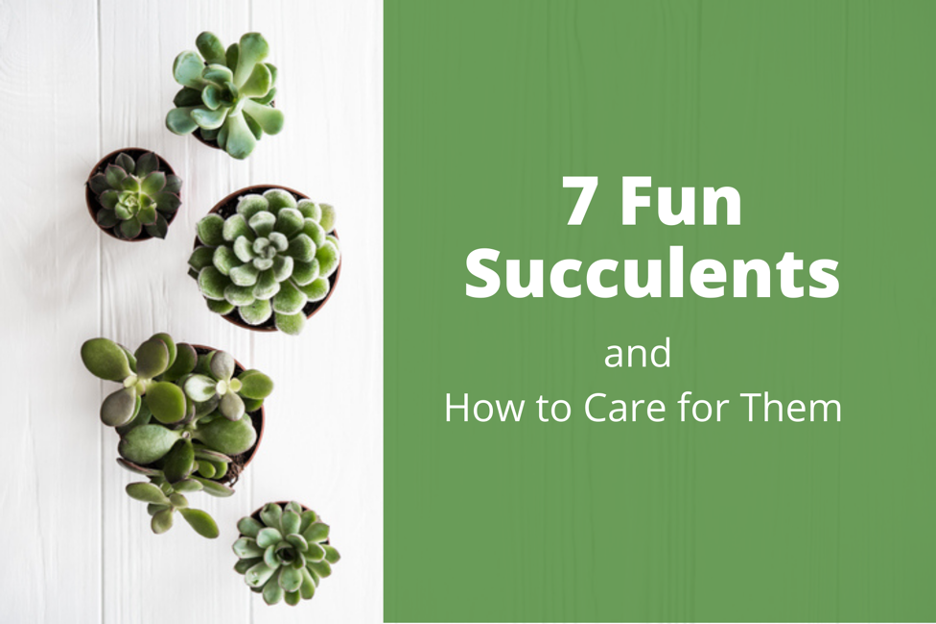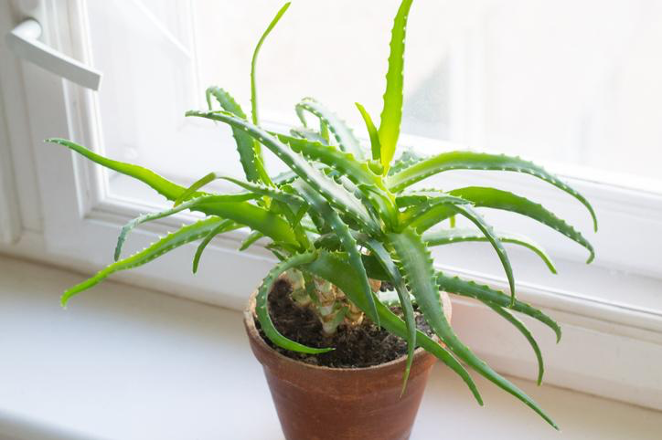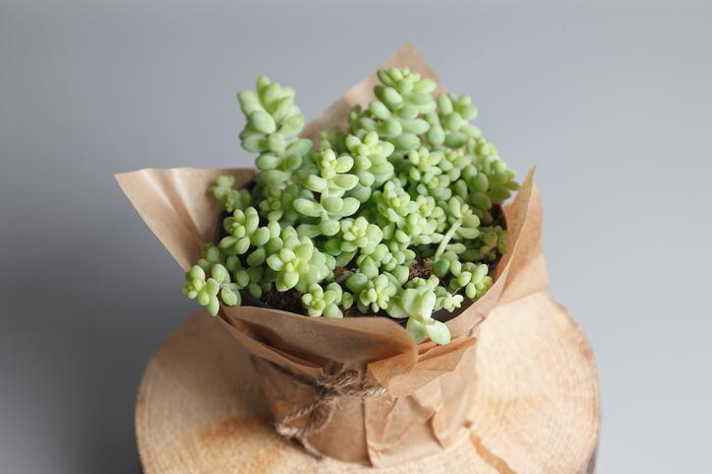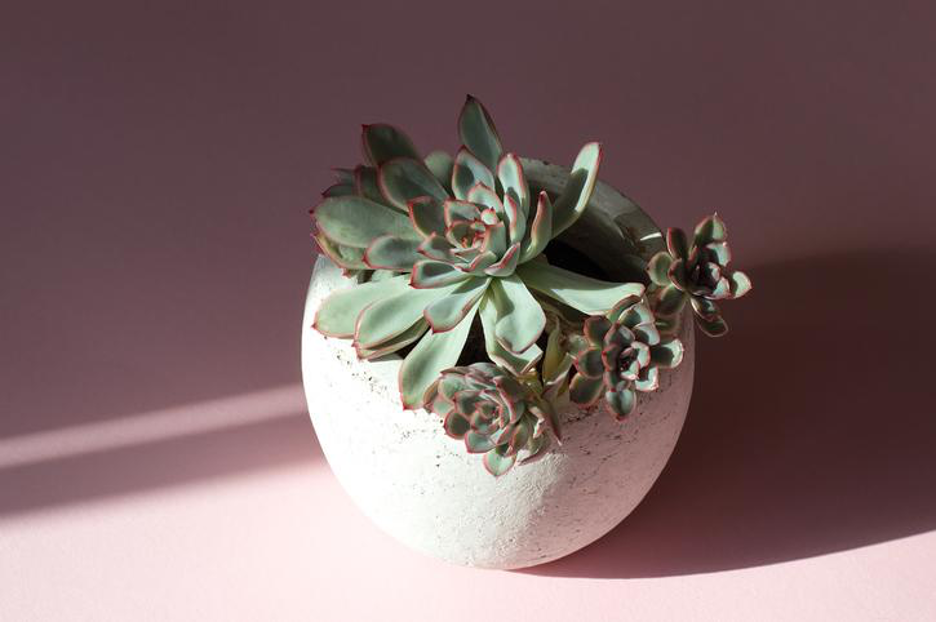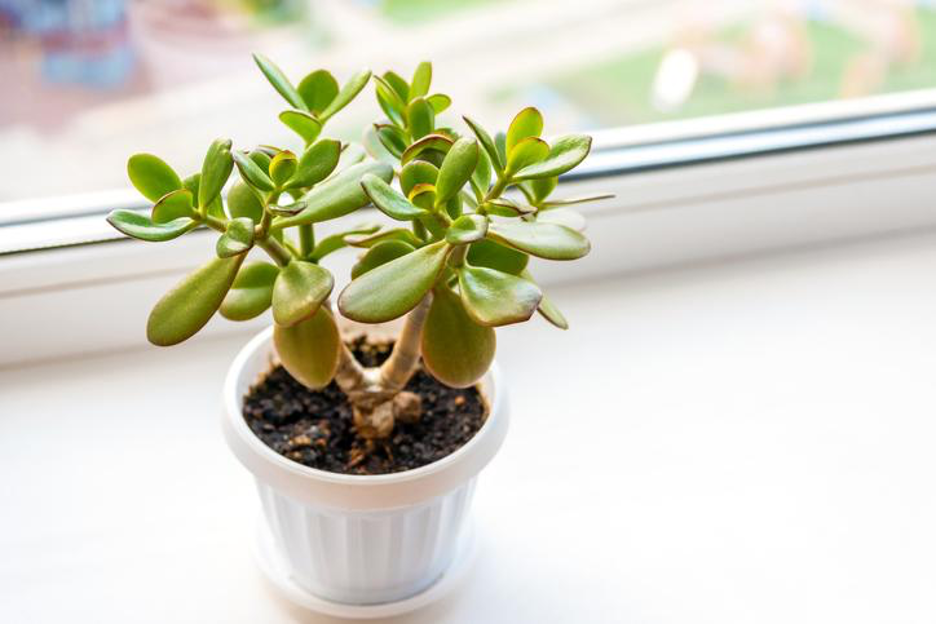Succulents come in an array of colors and geometric shapes. And although they’re easy to take care of, a variety of succulent types comes with a variety of different needs. In this guide, Jobe’s Organics shows you the right conditions and products—like our newest market innovation, succulent fertilizer spikes—to help you secure succulent success.
What Is a Succulent?
Succulents are plants that store water in their leaves, stems, or roots (which means watering them less often!). Succulents’ sturdiness allows various types to thrive in hardiness zones 2 through 12, which includes most of the continental United States. Well-known succulents include aloe vera, jade plants, and burro’s tail plants.
Some succulents have health benefits, such as air purification, for your home. Succulents come in various shapes and sizes, from the 6-inch zebra plant to the 1 to 8-foot-tall snake plant. Certain succulents, like the widow’s-thrill, have flowers that bloom in various seasons.
Succulent Types and How to Care for Them
Succulents belong to more than 25 different plant families. While their diversity makes them a great addition to any room in your home, care may vary between succulent species.
In general, all succulent types require minimal watering and sandy, loose potting soil. Succulents’ hardy nature allows them to retain nutrients for extended periods; however, they can certainly benefit from fertilizer spikes a few times a year, depending on the type.
In this article:
- Aloe Vera
- Burro’s Tail
- Crown of Thorns
- Echeveria (Hens-and-chicks)
- Jade Plant
- Panda Plant
- Snake Plant
- How to Pot Your Succulent
- Choosing the Right Soil for Your Succulent
- Propagating Your Succulent
How to Care for an Aloe Vera Plant
Aloe vera plants are a popular succulent type. Not only are they easy to care for, but they can also soothe sunburns. Place the gel from your aloe vera plant’s leaves on your sunburn to ease pain and itching.
Recommended for: Any indoor gardening skill level and homes without pets (aloe vera is poisonous to cats and dogs). Generally, aloe vera plants need lots of sunshine, warm temperatures, and regular, light watering.
Sunlight: Place in a spot with indirect sunlight (with the exception of some direct sunlight in winter months). Aloe vera plants can sunburn if they are in direct sunlight longer than six hours.
Water: Requires minimal watering. When the top 1 inch of soil is dry, water thoroughly and let excess water drain off. Brown leaf tips indicate that your aloe vera plant is not receiving enough water.
Fertilization: Does not require constant fertilization more than twice a year with fertilizer spikes.
How to Care for a Burro’s Tail
Burro’s tail plants’ unique shape makes them a fun succulent addition to your home. Their round leaves grow in long tendrils, making them perfect for hanging baskets.
Recommended for: Any indoor gardening skill level and homes with children or pets. Burro’s tail plants require minimal watering, partial sunlight, and warm temperatures. Burro’s tail plants work well in hanging baskets.
Sunlight: Place in partial sunshine, with no more than four hours of direct sunlight.
Water: Only water when the top soil is dry (typically every two weeks). A sign of dehydration is when leaves lose their rigid roundness.
Fertilization: Does not require constant fertilization more than once a month with fertilizer spikes.
How to Care for a Crown of Thorns
Crown of thorns plants add a great pop of color to your home. In proper conditions, they can keep their blooms all year long.
Recommended for: Intermediate and advanced gardening skill level and homes without children or pets. While crown of thorns plants are a unique addition to your home, they are poisonous to humans and animals if ingested. Contact with its sap can also irritate your skin.
Sunlight: Place in partial sunshine. Never place in direct sunlight.
Water: Only water when the first inch of soil is dry. Water thoroughly and drain off excess water. Too much water can cause its roots to rot.
Fertilization: Feed once a month during its growing season (late spring to fall).
How to Care for an Echeveria (Hens-and-Chicks)
Hens-and-chicks have a more “classic” succulent look. They come in a variety of colors and shapes, making them fun to collect for your home.
Recommended for: All indoor gardening skill levels and homes with children or pets.
Sunlight: Place in full sunlight with some shade.
Water: Only water when the soil is dry. Hens-and-chicks are highly susceptible to stem and root rot from overwatering.
Fertilization: Do not require fertilization. Hens-and-chicks plants typically thrive in nutrient-poor soil.
How to Care for a Jade Plant
Jade plants are another succulent staple. These sturdy plants are native to South Africa and are one of the easier succulents to care. While they can grow to be several feet tall, they make excellent houseplants. Terra cotta pots are best for larger, top- heavy jade plants.
Recommended for: All indoor gardening skill levels and homes without pets.
Sunlight: Direct sunlight.
Water: Only water when soil is completely dry. Water before leaves begin to wilt or lose shine.
Fertilization: Should be fertilized every six months with fertilizer spikes or water-soluble fertilizers.
How to Care for a Panda Plant
The panda plant may be the cutest thing you see today. Native to Madagascar, the panda plant gets its name from the way its leaves resemble panda paws. This succulent is as tough as it is cute. Like other succulents, it requires very little care.
Recommended for: All indoor gardening skill levels and homes without pets.
Sunlight: Can be moved between spots with direct sunlight, indirect sunlight, and shade.
Water: Only water when soil is dry. Allow excess water to drain off.
Fertilization: Feed once a month during its growing season (spring until end of summer).
How to Care for a Snake Plant

Snake plants may be one of the most durable succulents; they can survive for weeks without light and water. They also benefit your health, as they purify the air.
Recommended for: All indoor gardening skill levels and homes without pets.
Sunlight: Can be placed in spots with all levels of light, but thrive best in medium to direct sunlight.
Water: Only water when soil is dry. Water every two to eight weeks, depending on the size of the snake plant.
Fertilization: Do not require much fertilization except once a month during the spring and summer. Fertilizer spikes are not recommended for snake plants, as their nutrients may not reach the roots.
How to Pot Your Succulent
Rather than buy a pre-potted succulent, try your hand at potting one. They are easy to take care of, but they can be picky about the soil you use to pot them.
Choosing the Right Soil for Your Succulent
Succulents thrive in porous, sandy soil with materials such as clay and silt. In addition, you can use soil amendments—like Jobe’s Organics Soil Acidifier—to help ensure the right amount of acidity in your succulent’s new home.
Make sure to test the pH of your soil before adding anything. Most succulents thrive in a soil acidity around a pH of 6.
Propagating Your Succulent
Propagation is an affordable way to grow your succulent collective. You can grow more plants by cutting and planting the leaves or stems from your current succulent. The propagation process varies depending on the succulent type.
Three options for succulent propagation are:
- Leaf cutting: Cut leaves from the mother plant and place in a pot with perlite. Example plant: Hens-and-chicks.
- Stem cutting: Trim at least two stems off the parent plant. Set the cut stems aside to let them form a callus for 5 to 7 days before planting in a pot.
- Pup planting: Place fallen or cut leaves from the parent plant in potting mix, then water lightly.
Trust Jobe’s to Help Your Succulents Succeed
Whatever succulent you bring home, make sure you give it the best chance to thrive. From soil amendments to fertilizer spikes for succulents, our garden and landscaping products can help your new plant friend feel loved. Whether you’re a new indoor gardener or a green-thumbed expert, trust Jobe’s to offer the right indoor gardening solutions to make your home a green haven. Check out our other how-to guides for more gardening tips and tricks.
